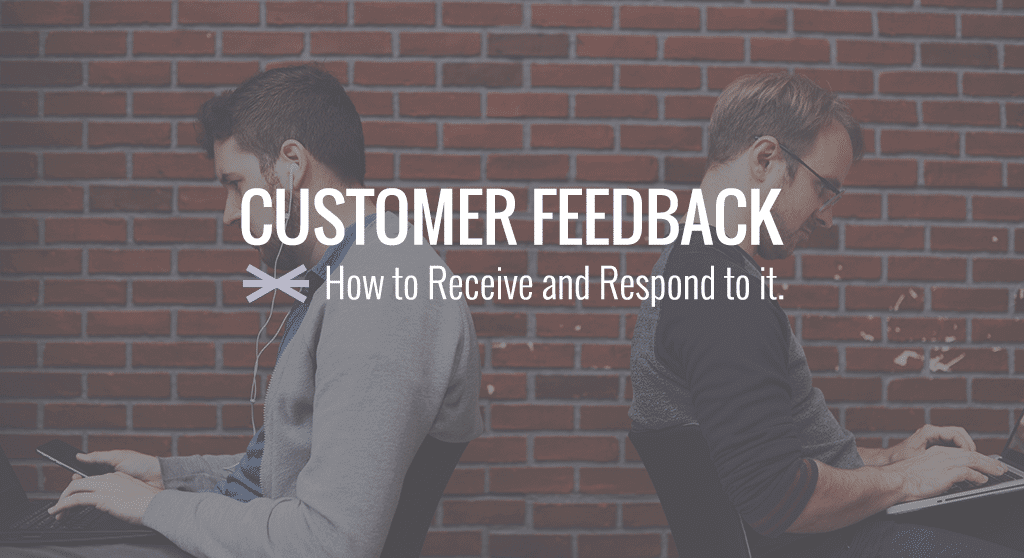
Why you need it, how to get it, and what to do with it once you have it.
Customer feedback. I’m not sure how many people outside the PR and Marketing side of business understand how valuable it is. In fact, most of us feel pestered by requests for feedback when we receive them, make little effort to respond unless we’re unhappy with our service, and take it as granted that even when we do respond, no one’s paying attention.
But as a marketer, quality customer feedback is one of our most important assets. Any business worth its salt is constantly aware of their ability to improve. And a good piece of customer feedback can provide an excellent incentive for a business to invest in certain features.
Since realizing this, I’ve become much more articulate in leaving feedback for businesses when they ask for it. But I’ve also become more critical of how businesses gather and process feedback. So, here’s a few things I’ve observed from my recent experiences, and how I would address them as a marketer.
1. Make it easy for customers to tell you what they think.
When you ask your customers for feedback, you’re asking them to do you a favor. If you make it difficult, only the most irritated people will be tenacious enough to tell you what they think, and even your satisfied customers might be a bit peeved. To that end, don’t make you customers jump through hoops to leave a review. And don’t ask them too many questions.
As an example, I use a language app called iTalki that allows me to schedule lessons via Skype. When the time for the lesson finishes, the app asks me to confirm that the lesson is complete, and then immediately asks what I thought of my tutor. It also presents a few descriptive adjectives that I can use such as “prepared,” “supportive,” and “punctual.” The tutor reviews me in return, and this helps everyone on the site find tutors and students to work with.
Uber works the same way. Drivers and riders rate each other, providing benefit for everyone who uses the app. And because this is such a significant feature, Uber goes out of their way to ensure the process is painless.
On the other hand, Noodles & Co. offers a feedback compensation program that doesn’t work so well for me. Every time I get a receipt, there’s an offer on the bottom for a special discount if I go to a certain URL and tell them what I think. The problem is, for this program to be valuable to me, I would have to:
- Save my receipt until a convenient time to look up the address.
- Go to the address and type in a 20-digit coupon code.
- Actually want the “special treat” they’re offering.
Its clunky, and it doesn’t do anything for me. I’ve never used it.
2. Offer compensation.
You’ll notice that some of the above examples also offered some form of reward or benefit for filling out their feedback survey. This is a great way to encourage users to rate your business, but only if you’re offering something of value. In the Noodles & Co. example I just gave, part of the problem with their compensation program is that I had no control over what I could earn. A “free order of pot stickers” doesn’t do me any good of I don’t like pot stickers, or if I’m not hungry enough for noodles and an appetizer, or if I’m on a diet, or if I’m vegetarian.
By contrast, I used to go to a salon that had a fantastic loyalty rewards program. I got points based on the purchases I made, friends I referred, and appointments I rebooked. They also offered loyalty points for customer feedback, and their process was incredibly simple.
A few minutes after my appointment finished, I would receive both a text and an email with a link to a survey. The survey asked me to leave a star rating for my service, and also gave me a brief, optional text box to leave any additional comments. I sent them a review after every appointment. They credited loyalty points to my account, and then I got to choose what to do with them.
3. Be an active listener.
One of the biggest disincentives for many customers when it comes to leaving feedback is the impression that no one’s listening. Sure, we all see the writing that says “your feedback is important to us,” but most of us believe it about as the scripted platitudes that play on repeat every time we’re put on hold.
The problem is that, too often, the response to a customer service complaint is reactive rather than proactive. Companies would rather soothe than solve. And this makes customers feel as though companies are more interested in a patch job to than a long-term improvement in their service.
A couple years ago, I had to call my health insurance company over an error in their billing process. I should have been able to handle it online, but I couldn’t make sense of their system. When I started detailing my problems using this system to customer service, my representative directed me to an online survey form and practically begged me to fill it out. Apparently, she was tired of walking customers through the very thing I was telling her about, and wanted some customer feedback to validate her own complaints.
I’m certain the company was already working on a project to update their system, and I have no idea how much affect my feedback had. What I can say is that a year later, when I again had a problem with my service and went online to resolve it, their entire user portal had been updated and every one of my complaints had been addressed.
Instead of responding to a customer complaint as if you’ll do anything to make it go away, probe a bit deeper. Find a solution.
4. Follow up with customers when appropriate.
I ran out of gas the other day and had to call my insurance company for roadside assistance. It took four or five phone calls and over two hours of waiting by the side of the highway in rural Indiana before someone finally arrived to help me out. This sounds like the beginning of a nightmare customer service story, but it actually wasn’t.
In fact, my customer service was excellent. I was impressed by the automated system my insurance company used to check in with me throughout the process, asking me to confirm if my driver had arrived, sending me a number to call when the driver was late, following up with me after the driver left to ask about my experience, and finally scheduling a follow-up call with an agent after I indicated a flaw in my service.
What struck me most about this was that, by the time I spoke with one of the representatives, it was clear they had read my survey feedback. They had used automation to flag points of failure in their system. They weren’t calling everyone. Instead, they were calling me, specifically, to gather more details about what went wrong with my roadside assistance. Their method of gathering and responding to customer feedback was solutions-oriented, and I felt like they were recruiting me to help solve the problem.
Use customer feedback to improve and prepare.
I’ve noticed many businesses use their customer feedback form to try to win back disgruntled individual. The “what can we do to make this right” approach has some merits, especially if your business has made a mistake. But it can also go too far.
You don’t want to hound a customer who has made it clear they want to cut ties with your business. If you can’t work out a way to restore the relationship, let it go.
Similarly, if the customer is overly demanding, they may not be the right person for your business. That’s OK. If you give the best service you are able and it’s simply not the service your customer wants, you shouldn’t bend over backwards to transform your brand into something it isn’t.
However, there are ways to attract the valuable data from customers that can build your business and improve your service. Employ rigorous usability testing to make sure your feedback system is painless. Use automation to streamline the feedback process and identify customers that need a personal follow-up.
Above all, act on the information you receive. Most of us don’t want to be placated. We want to be heard.






